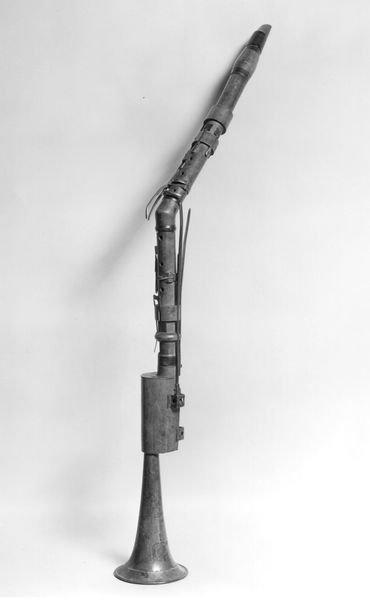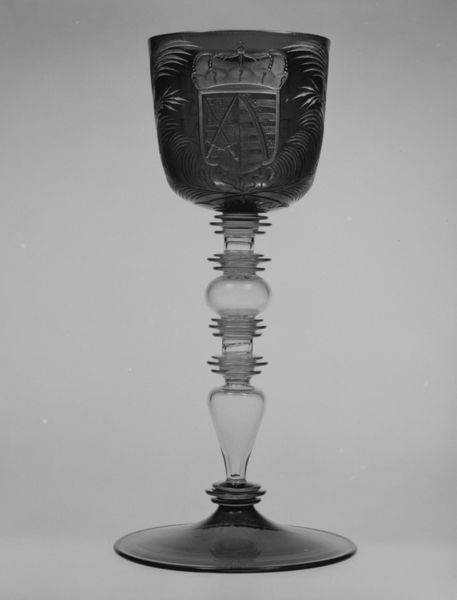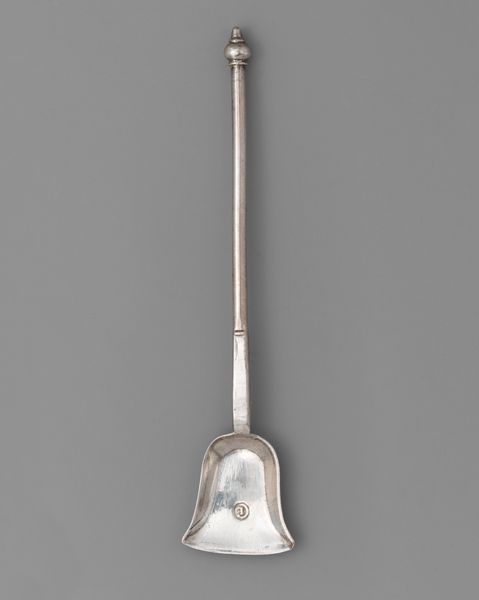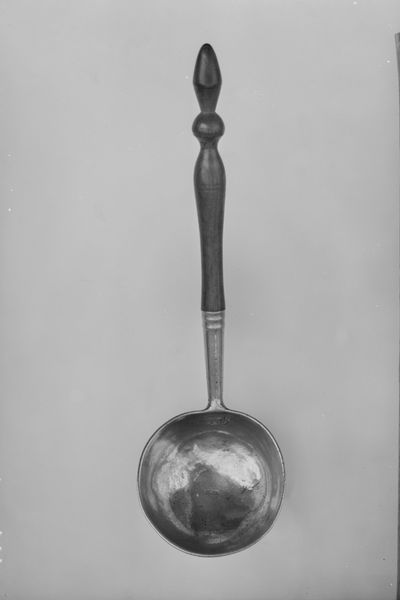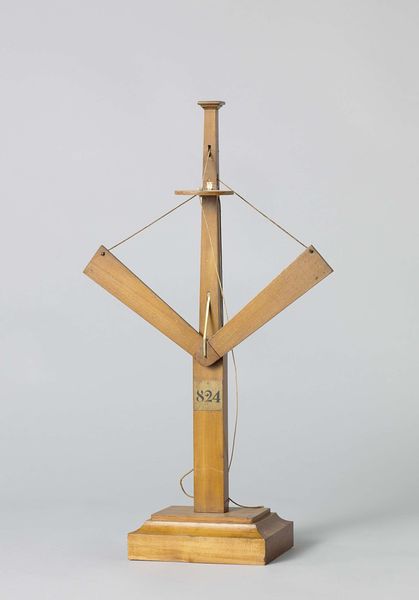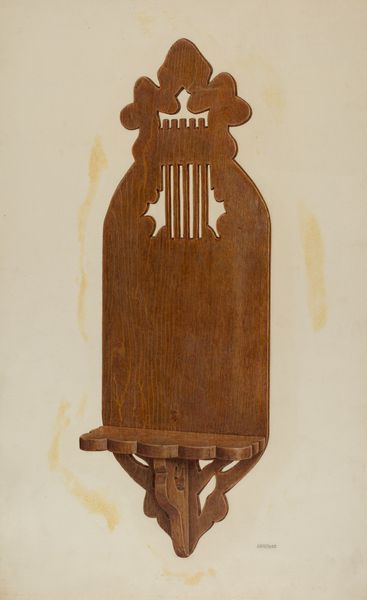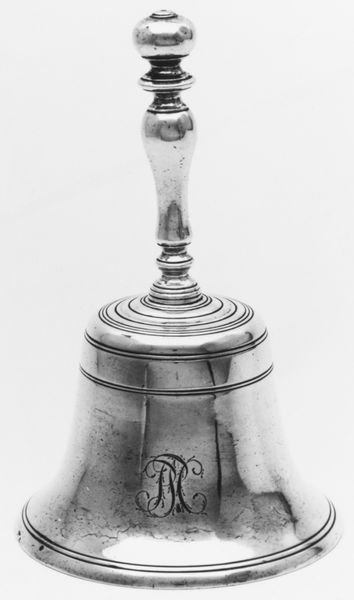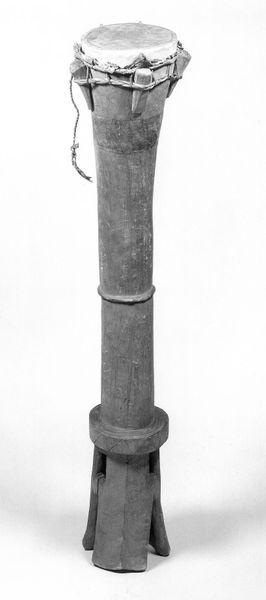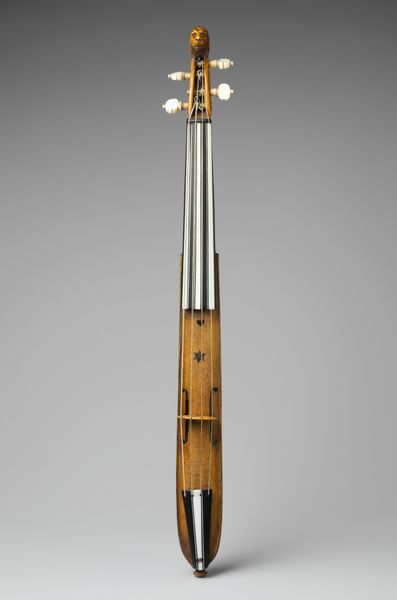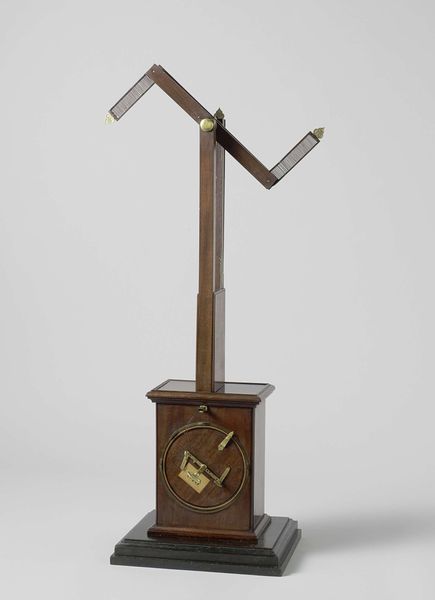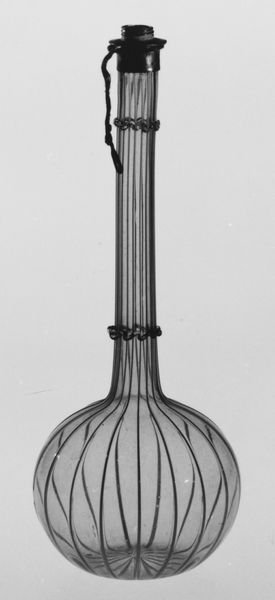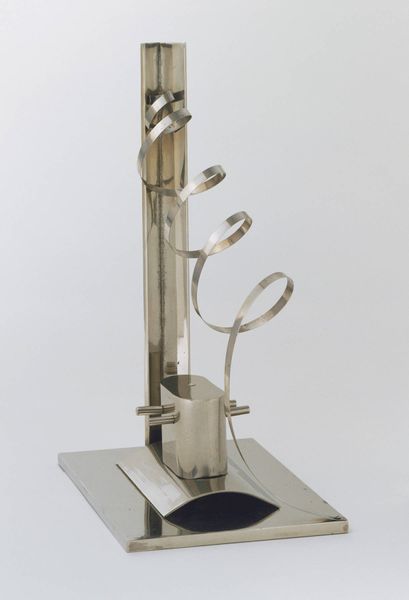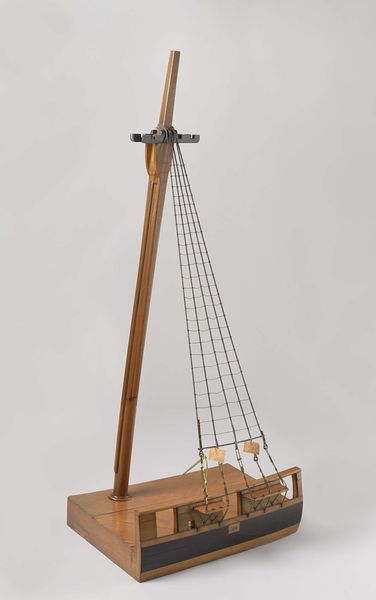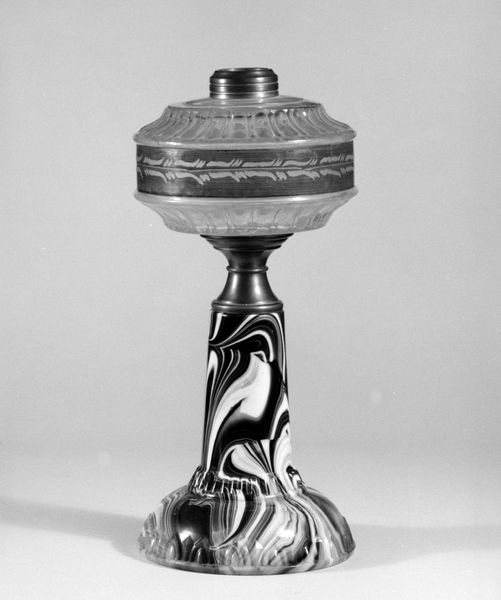
sculpture, wood
#
sculpture
#
geometric
#
sculpture
#
black and white
#
wood
#
musical-instrument
Dimensions: H.: 28 cm (11.02 in.); Base: 7.1 cm (2.8.in.) square; (bottom); Base: 9.1 cm (3.6 in.) tall
Copyright: Public Domain
Curator: The moment I saw this peculiar thing, it felt strangely ominous. Like a miniature guillotine or some medieval torture device. Editor: We're looking at Johann Nepomuk Maelzel's Metronome, a sculpture crafted from wood sometime between 1811 and 1830. You can find it here at the Met. Its rigid geometric design and monochromatic palette emphasize its stark, functional form. The ascending calibrated scale suggests both measurement and perhaps, aspiration? Curator: Ominous aspiration! You might say I have a bit of a melodramatic streak. Seriously, though, there is something eerie about an instrument so dedicated to regulating rhythm and pace. Like it wants to keep time in check. Editor: Precisely! Time is its very essence. Look at the severe lines, the stoic pedestal – it embodies a rigorous adherence to structure. The wood grain, while adding texture, does nothing to soften the visual severity. It’s less a celebration of music and more a stark tool. Curator: It's the circle that gets me. The little embedded emblem – is that to imply it’s more important than it seems? You're right—the scale of ambition versus the tool that drives that vision creates this tense paradox! Editor: Yes! The emblem functions as a signature, almost declaring its innovation within this measured landscape. The metronome stands not just as a regulator, but as an ideological pillar that structures musical creation. The very embodiment of musical standardization! Curator: Standardization? It’s the ghost in the machine... Anyway, next time I’m running late for an opening, maybe I’ll imagine this little doomsday device chasing after me. Could inspire some actual promptness for once! Editor: A poignant takeaway indeed. Maelzel's creation pushes us to reconsider not only musical practice, but also how we relate to, as you poetically suggest, the inexorable march of time. Let's move along now.
Comments
No comments
Be the first to comment and join the conversation on the ultimate creative platform.
